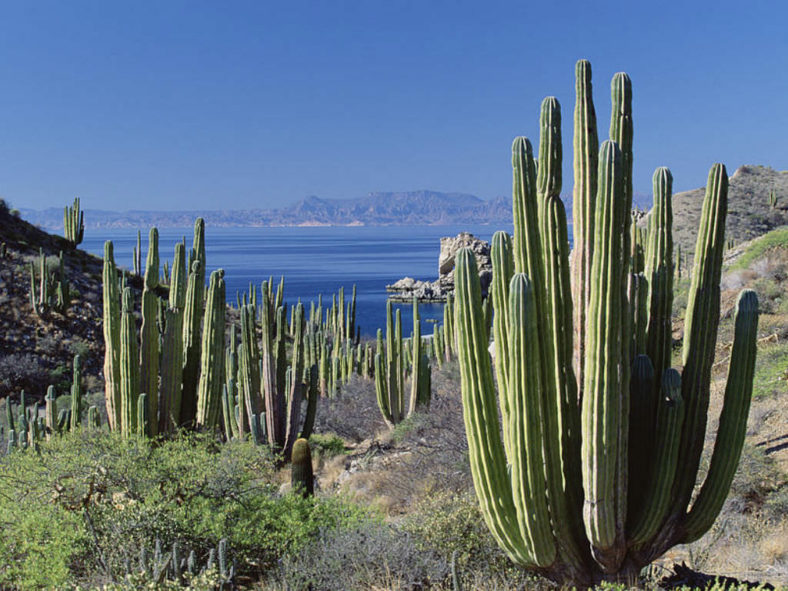Pachycereus is a small genus of about ten species and includes some of the largest specimens in the entire Cactaceae family. The largest cactus ever recorded was a Pachycereus, specifically a colossal Pachycereus pringlei, commonly known as Cardon Cactus, which astoundingly grew over 60 feet (18.3 m) tall. Though some Pachycereus may be massive, many of these cacti grow to a much more manageable size. They are often cultivated in the American Southwest and Mexico, where they are indigenous.
The most common species are Pachycereus pringlei and Pachycereus marginatus, which can be shaped as a fence or a feature in your landscape. These cacti have a columnar growth habit, with ribs on the stems and many treelike branches. Superficially, P. pringlei resembles the more common Saguaro and is often mistaken for it. However, like most other plants that can reach staggering sizes, Pachycereus cacti grow extraordinarily slowly over hundreds of years. Thus, they require virtually zero assistance, provided they are raised in a desert environment. These magnificent specimens were once much more common, but many have been cleared or cut down. Nonetheless, entire forests of Pachycereus still exist in Mexico, and this stark and beautiful cactus is a delight to see in person. Their spiny, alien, colossal shapes are a great example of the twisted beauty to which cacti are capable.

Growing Conditions
Light: As much sun as possible.
Water: Overwatering Pachycereus is a surefire way to damage them. Arid, hot conditions, similar to those in the Mexican desert, are ideal. You really should not have to water them at all.
Temperature: Their conditions should be as desert-like as possible, which means very high temperatures.
Soil: Pachycereus cacti can grow on rocks without soil. It accomplishes this through a symbiotic relationship with bacteria in its roots, which glean nutrients from the rock and pass them on to the plant. If you grow them in containers, potting soil is fine, but it may not be necessary.
Fertilizer: Although many cacti benefit from feeding with a cactus fertilizer, fertilizing them will not hurt.
Propagation
Like most cacti, these plants propagate by cuttings. Sever a branch and replant in well-drained soil. Make sure to stand the cactus up in an empty container to let its ends heal off before you replant it. This will keep its stems upright, and cacti with dried tips form roots more easily after planting.
Repotting
This is inapplicable to most scenarios in which Pachycereus would be grown. If you choose to grow a small Pachycereus pringlei in a container, repotting it can be helpful. Repot it like any other cactus: remove it from the pot, trim away any dead roots, and replant. Watch out for the spines. They can really ruin your day.
Grower's Tips
These extraordinarily low-maintenance cacti can basically grow untouched for decades, so there is not much you need to worry about. However, they must receive adequate sun and heat and be careful around their spines. If grown in containers, ensure they are repotted and that the soil is not too moist. Other than that, these plants are about as simple and hands-off as it gets.
Source: about.com
Links
- Back to genus Pachycereus
- Succupedia: Browse succulents by Scientific Name, Common Name, Genus, Family, USDA Hardiness Zone, Origin, or cacti by Genus